A few years ago, some buddies and I were at the Vintage Motorcycle Days down at Mid Ohio. Our impulse buyer friend Matt has $300 left, and its our last day there, so what does he do? Buys the worst, and quite best little bike to "keep at the cabin" a 1965 Suzuki K11 in black with chrome on the tank. We get it home, off the trailer and he goes to fire it up, nothing. Being 17 & 18 plus never have worked on a two stroke before, I gave Matt a hand at getting it going again. I had basic knowledge of working on Honda OHV singles and a CB350 once before that, but two strokes are a whole different game. We sourced the problem to a clogged fuel filter, which definitely needed to be there. I peeked into the tank after that, and I was surprised it even held gas. Asking Matt why he would buy such a garbage bike for that much money, his only response was "He said its got fresh rings". So neglecting the rusty gas tank, we changed the filter and took it up north, where it would sit for two years. As time went by, we occasionally putted around on it, but the love for our much more powerful Honda CB350s and Yamaha RD350 kept that bike from getting progress.
It wasn't until we caught wind of the 2010 Detroit Thunderdrome race that the bike came back downstate to my house. Now what the Thunderdrome is, is a race series on a banked cement velodrome, designed for bicycles, built in the late '60s. There are several different classes, from Minibikes to Mopeds to Pitbikes. Being a four speed, we assumed the K11 would do well, except the ratios are awful. We started with putting a larger front sprocket on, and that unleashed what we thought could be a great bike for this race. Using some random old cafe parts, the bike literally built itself. The only problem we ran into, is there aren't any aftermarket parts for this engine besides service bore pistons and different gear sizes. I was lucky to even find a flywheel puller labeled to fit the K10, K11, or K15. Long story short, we had our hands full.
Enough talk, you get the idea. Here's how it started, to where it is now with tons of help from Two Stroke Tuning Guides.
Stock
![Image]()
First, fixed the tank, designed a downdrafted intake manifold to house a 22mm carb on a new 1966 Aluminum cylinder, fiberglass seat, stiff shocks, rebuilt front end with stiff shocks, new tires, modified hodaka expansion chamber, clip on bars, newer clutch plates, .75 over bore, custom Copper head gasket. He won a race from the Thunderdrome, which gave us some money to play with.
![Image]()
![Image]()
![Image]()
![Image]()
![Image]()
![Image]()
Next, rebuilt the entire engine using a later model "stuffed" roller bearing crank from the '66 model. A dry clutch to keep it from slipping with the power we added. Also modified the squish band on the head and ported the exhaust. Scribed piston to keep it from seizing. Modified lower transfer ports. Bump/rotor start only. Weve been through four pistons, and two over bores at this point. Takes a lot to get a bike like this to run right, and last a while at wide open throttle. We only use Opti 2 oil now.
![Image]()
![Image]()
![Image]()
![Image]()
![Image]()
Latest picture. Has a newly designed intake manifold since previous one.
![Image]()
The next thing for it is a magneto ignition, modified from an AHP inner rotor kit. To get it to run good it needs to be advanced pretty heavily, and the stock points system has trouble keeping up. Custom tubular frame, and rearset controls. Lastly will be a reed port intake, modified from a RM80.
It wasn't until we caught wind of the 2010 Detroit Thunderdrome race that the bike came back downstate to my house. Now what the Thunderdrome is, is a race series on a banked cement velodrome, designed for bicycles, built in the late '60s. There are several different classes, from Minibikes to Mopeds to Pitbikes. Being a four speed, we assumed the K11 would do well, except the ratios are awful. We started with putting a larger front sprocket on, and that unleashed what we thought could be a great bike for this race. Using some random old cafe parts, the bike literally built itself. The only problem we ran into, is there aren't any aftermarket parts for this engine besides service bore pistons and different gear sizes. I was lucky to even find a flywheel puller labeled to fit the K10, K11, or K15. Long story short, we had our hands full.
Enough talk, you get the idea. Here's how it started, to where it is now with tons of help from Two Stroke Tuning Guides.
Stock
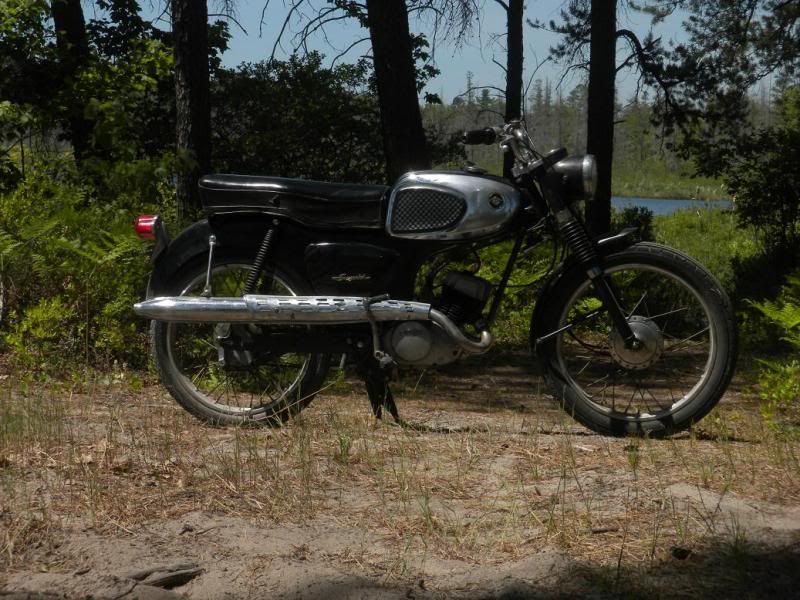
First, fixed the tank, designed a downdrafted intake manifold to house a 22mm carb on a new 1966 Aluminum cylinder, fiberglass seat, stiff shocks, rebuilt front end with stiff shocks, new tires, modified hodaka expansion chamber, clip on bars, newer clutch plates, .75 over bore, custom Copper head gasket. He won a race from the Thunderdrome, which gave us some money to play with.
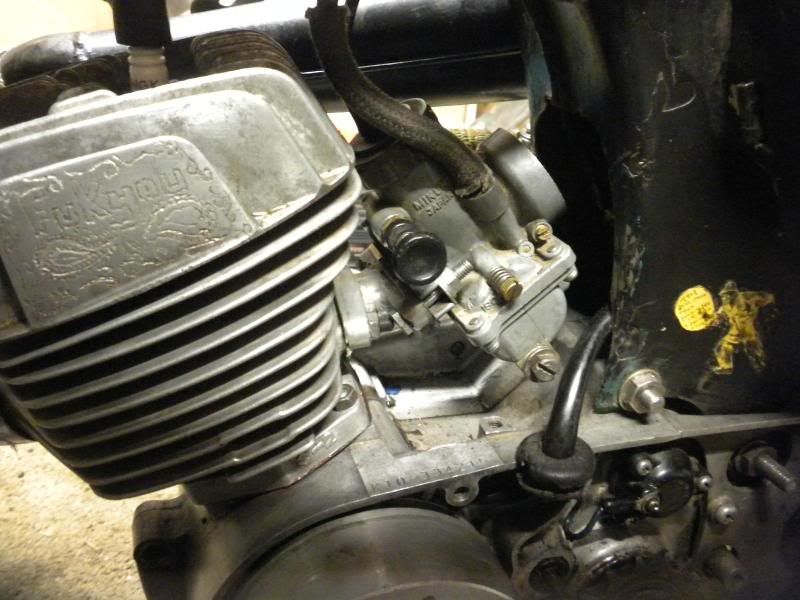
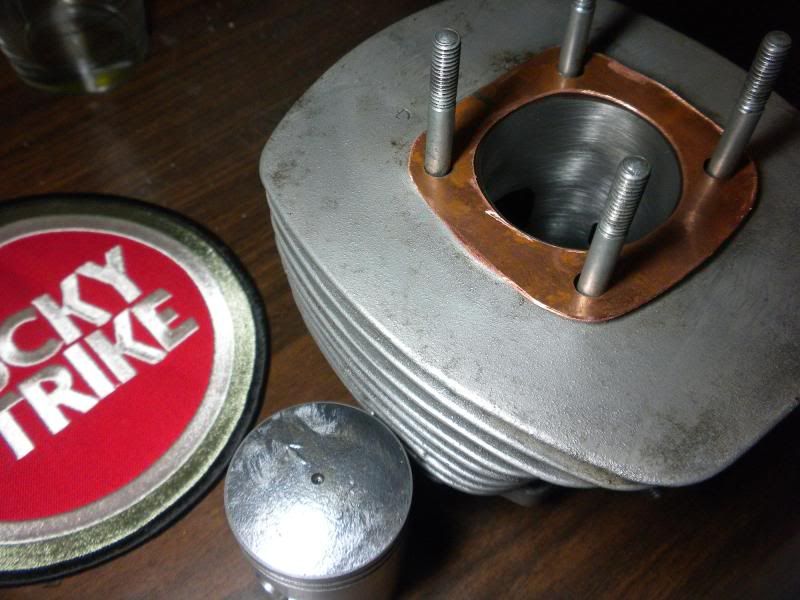
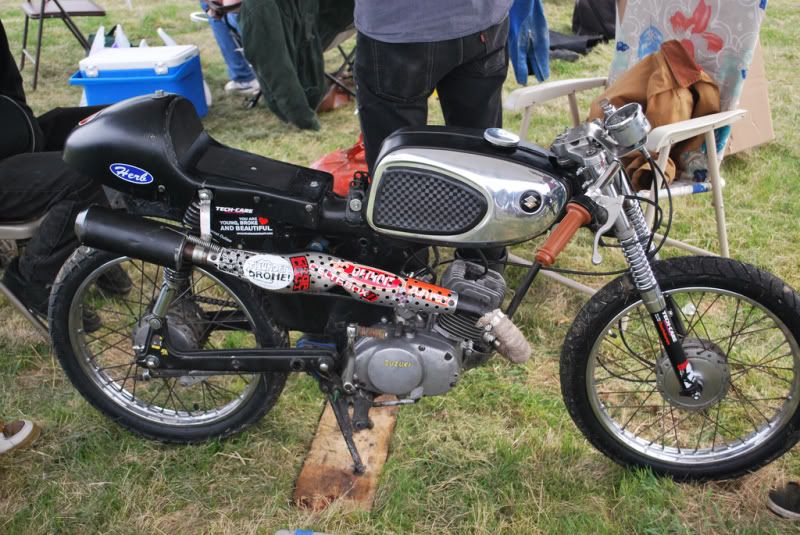
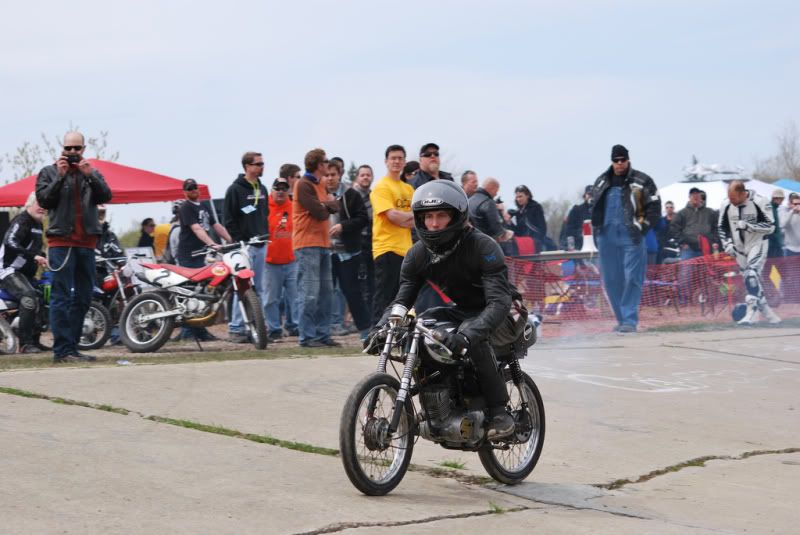
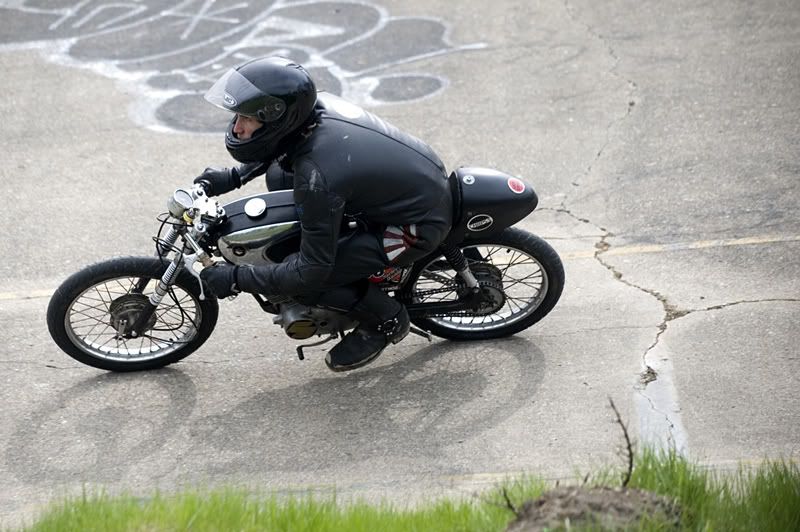
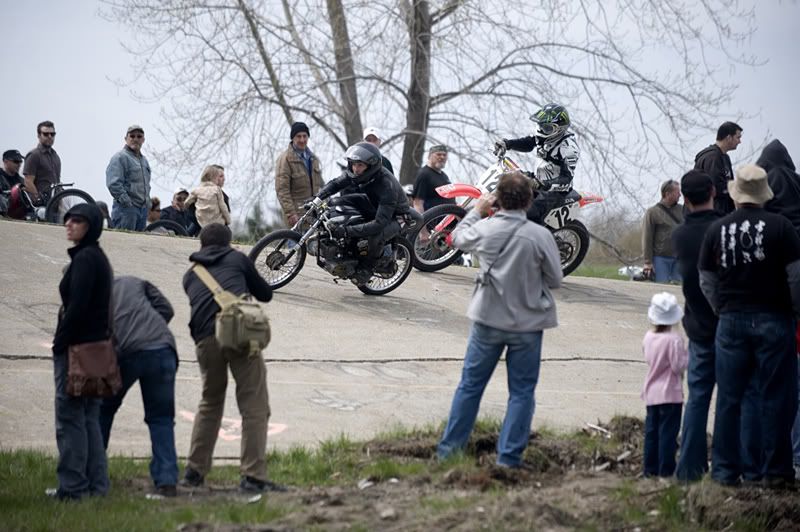
Next, rebuilt the entire engine using a later model "stuffed" roller bearing crank from the '66 model. A dry clutch to keep it from slipping with the power we added. Also modified the squish band on the head and ported the exhaust. Scribed piston to keep it from seizing. Modified lower transfer ports. Bump/rotor start only. Weve been through four pistons, and two over bores at this point. Takes a lot to get a bike like this to run right, and last a while at wide open throttle. We only use Opti 2 oil now.
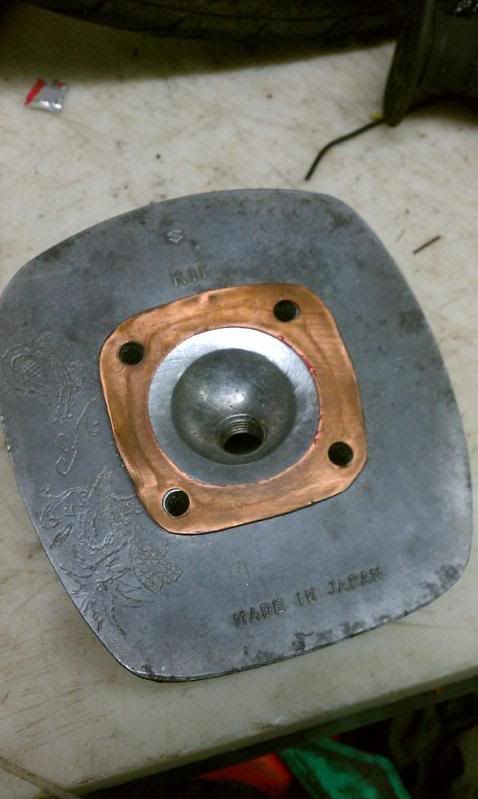
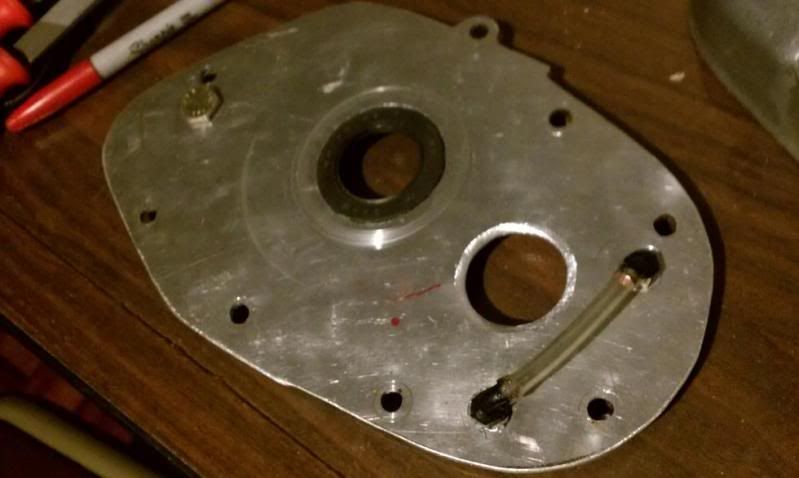
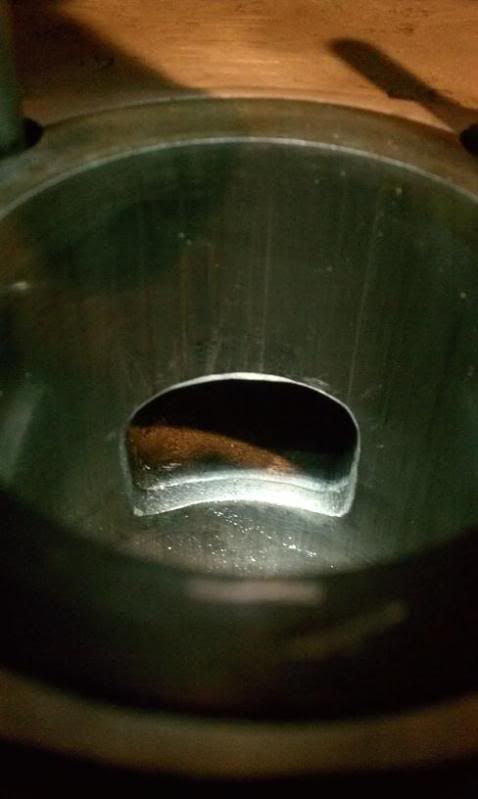
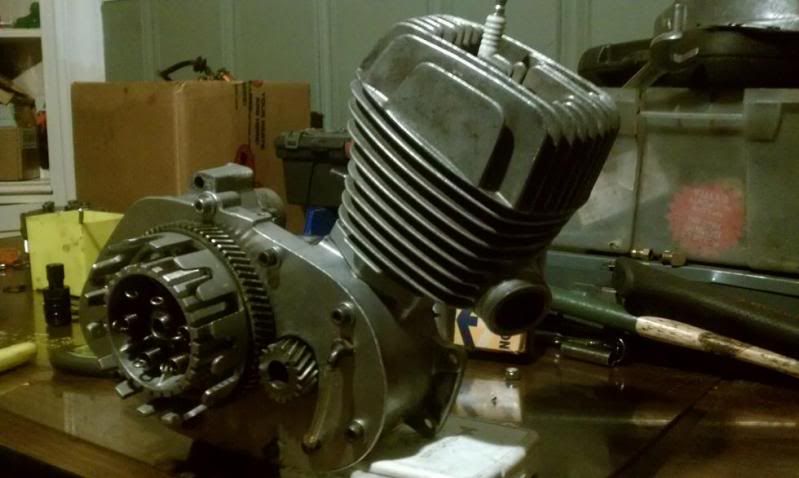
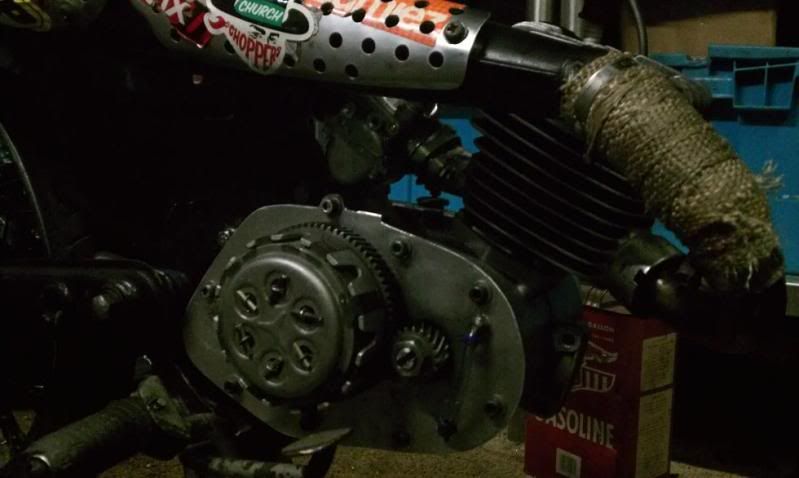
Latest picture. Has a newly designed intake manifold since previous one.
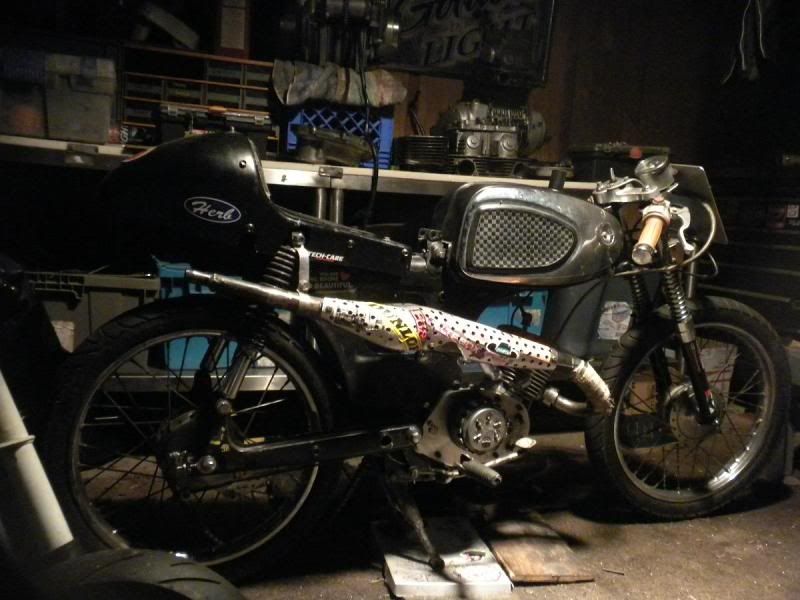
The next thing for it is a magneto ignition, modified from an AHP inner rotor kit. To get it to run good it needs to be advanced pretty heavily, and the stock points system has trouble keeping up. Custom tubular frame, and rearset controls. Lastly will be a reed port intake, modified from a RM80.




